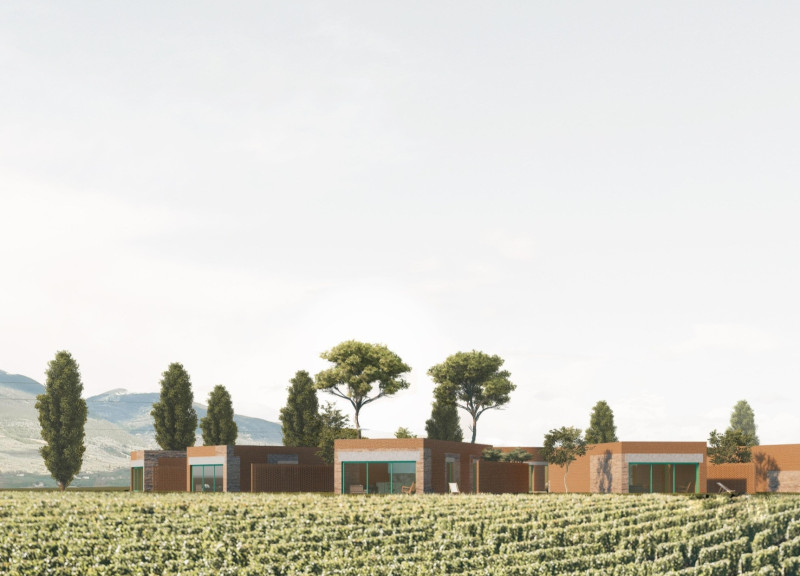5 key facts about this project
The design, located on the outskirts of Spello, features a set of villas and a tasting room, creating a blend of residential living and shared community space. The project focuses on several important themes, emphasizing the relationship between people and nature, the connection of landscape with architecture, the reinterpretation of local geology, and the reuse of existing materials.
Design Concept
The villas take inspiration from traditional Italian homes, showcasing a straightforward construction style. Each villa is organized in a linear manner, with spaces centered around a patio. This layout encourages interaction among residents while ensuring private areas remain distinct yet connected to the natural surroundings.
Materials and Sustainability
A key aspect of the project is the plan to dismantle existing structures on the site in order to recover bricks for new building work. This method maintains a link to the area’s history and supports sustainable practices by reusing materials. New bricks from local suppliers are used alongside historic bricks, which are integrated thoughtfully into the construction to reflect local geology.
Spatial Organization
In the design, the number of openings has been carefully considered to control how each villa manages heat. Fewer openings help to prevent overheating in warmer months. The consistent use of brick walls simplifies construction technology, allowing traditional techniques to be revived, which also helps provide jobs for local craftsmen.
Public and Private Connectivity
The design encourages a smooth connection between the private villas and public spaces. Brick flooring continues from the villas into shared outdoor areas, creating a unified environment that promotes community interaction. This design choice makes it easy to move between personal and communal spaces, aligning with the overall focus on sustainability.
A notable feature of the villas is the patio walls with their perforations. These openings not only improve ventilation but also create a visual link between inside and outside, helping to soften the boundaries between private and common areas.






















































